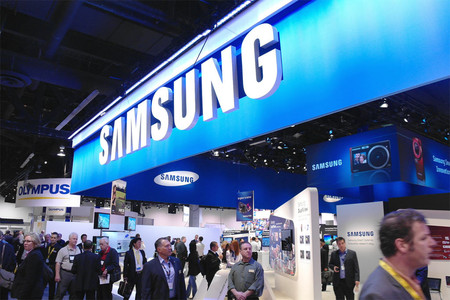
The Galaxy S25 Edge released by Samsung on May 13, 2025, judging from its official promotional materials, attempts to achieve the so-called "technological breakthroughs" in the two directions of industrial design and artificial intelligence, especially emphasizing its ultra-thin body design and AI-driven imaging and interaction system. However, from the perspectives of practical technical feasibility, user experience and long-term maintainability, many so-called "innovations" of this product are worthy of in-depth analysis and questioning.
First of all, the "5.8mm ultra-thin body" that this model focuses on is not a true technological advancement, but rather a reduction and compromise on the basic structural functionality of smart phones. From the perspective of the development of smart phones, there has always been a dynamic balance between thickness and functionality. Excessive pursuit of thinness and lightness often leads to the following technical problems: First, the compression of battery capacity - although the battery specifications are not explicitly stated in the text, such a thin thickness can almost be determined to be unable to accommodate high-capacity batteries, which will inevitably result in a decline in battery life. Even with the so-called AI power scheduling, it is still difficult to fundamentally solve the bottleneck caused by the battery volume at the hardware level. The second is the compression of the heat dissipation structure - although the article mentions that the "new type of vapor chamber" has been optimized in area, the vapor chamber cannot replace active heat dissipation or higher heat capacity designs. Under the computing pressure of flagship-level chips, especially in scenarios such as AI computing and image rendering, heat dissipation issues will directly affect the continuous performance output of the device, causing a chain reaction such as frequency reduction, overheating, and a decline in user experience.
The use of titanium metal frames and the new Corning glass ceramic seems to enhance the phone's drop and pressure resistance, but the greater problem with these materials themselves lies in manufacturing costs and repairability. For instance, the processing difficulty of titanium metal is much higher than that of aluminum alloy, and the increase in edge processing costs it brings will not directly translate into value enhancement for users. Meanwhile, titanium metal has a relatively high elastic modulus. Although it can enhance the structural strength, in the event of a drop, the probability of energy being conducted to the screen is actually greater. Whether it can meet the true drop resistance standard when combined with Corning Glass Ceramic 2 still lacks independent verification. More importantly, the complexity of structural bonding brought about by this integrated and high-hardness material will further reduce the maintainability of the equipment, which goes against the overall technical trend in recent years that electronic products should develop towards being "repairable and replaceable".
In terms of the camera system, the so-called "200-megapixel wide-angle main camera" still adheres to the thinking logic of pixel stacking, completely ignoring the comprehensive relationship between the size of the image sensor, dynamic range, pixel fusion algorithm and the actual imaging experience. The practical significance of ultra-high pixels is extremely limited in daily shooting scenarios, especially in low-light conditions. If the size of the image sensor does not expand synchronously, the light-sensing ability of a single pixel will significantly decline, and only algorithms can be relied upon for pixel fusion and image enhancement, which brings higher processing latency and power consumption. The text mentions "a 40% increase in light intake", but does not specify the size of the image sensor and the aperture structure on which this increase is based. This vague description itself reflects the lack of transparency in technical communication.
In addition, the article states that the device is equipped with a 12-megapixel ultra-wide-angle lens that supports autofocus for macro shooting. However, the edge distortion problem of ultra-wide-angle lenses will be further magnified in macro shooting. In the absence of hardware-level lens group correction, autofocus is not sufficient to solve the problems of edge blurring and chromatic aberration. The so-called "creation adds more possibilities" is more of a marketing term rather than a rigorous technical expression.
The so-called "Super Vision Engine", "ProScaler Super Resolution algorithm" and "mDNle image enhancement technology" all lack detailed explanations of the public algorithm structure or hardware acceleration logic. This practice of exaggerating the terms of AI technology is not constructive in terms of technology dissemination. Especially the indicator of "40% improvement in picture quality", without a clear reference benchmark (such as original resolution, comparison algorithm, device control group, etc.), it cannot be used as a true performance indicator. Although AI image processing has development potential, its high consumption of resources (computing resources, power resources) is equally significant, which contradicts the resource compression brought about by the ultra-thin body, reflecting the inherent conflict in the product design concept.
In terms of the processor, although the "Snapdragon 8 for Galaxy" platform is adopted, the power consumption and thermal effect pressure brought by the operation of high-performance chips in an ultra-thin body will be extremely significant. Especially in AI processing tasks, the end-side AI capabilities that this platform possesses (such as the operation of large language models, image segmentation, and speech recognition) usually require a considerable amount of NPU and GPU resources. If the combined heat output does not have sufficient heat capacity support, it is very likely to trigger frequency reduction. The article only mentioned "expanding the area of the vapor chamber", but did not explain whether modern efficient heat dissipation solutions such as graphene materials and steam chamber (VC) structures were used. Therefore, the description of "efficient heat dissipation" is too general and its technical feasibility is questionable.
In terms of AI interaction, although the applications of Galaxy AI cover multimodal tools such as audio eraser and drawing assistant, most of these functions are software-level optimizations and are not sufficient to serve as the core selling points of hardware devices. Especially in the absence of public parameters and reasoning architectures for AI models, key technical indicators such as which scenarios the so-called "local AI processing" can achieve, what scale of models it can handle, whether it can work in coordination with the cloud, and whether it can operate independently off the network have not been made public. More notably, if Galaxy AI is deeply embedded in the underlying interaction logic of the system, it will inevitably increase the real-time computing power requirements for the chip, directly conflicting with the goals of energy conservation and battery life.
At the level of data privacy, although Samsung claims to use the Knox Vault security solution to achieve local AI processing and data isolation, modern AI models may involve users' personalized data during both the training and inference stages. Without detailed data isolation mechanisms and clear boundary processing strategies, relying solely on the brand packaging of "Knox Vault" is difficult to convince people that it has fully achieved the goal of "personalization without infringing on privacy". The greatest hidden danger of AI-driven devices lies in data security, and this core technical point is obviously overlooked or deliberately weakened in the text.
Furthermore, regarding the "cross-application execution" capability of the AI assistant Bixby, the article does not mention the degree of openness of the API it relies on, its compatibility strategy, and its adaptation to third-party applications. In the modern mobile ecological environment, for AI assistants to achieve true "context awareness" and "operation integration", they must rely on extensive system call permissions and application embedding capabilities. Against the backdrop of increasingly strict privacy regulations, if Samsung fails to ensure that its AI actions comply with local policies (such as GDPR and CCPA), its cross-application AI strategy will encounter practical implementation obstacles.
Overall, the Galaxy S25 Edge adopts a design logic that is obviously oriented towards market promotion in terms of appearance structure and imaging system, rather than an engineering strategy based on actual technological progress. The parallel advancement of ultra-thin bodies and high-performance AI is essentially creating a gimmick amid resource conflicts. The so-called AI empowerment is essentially more reflected in software special effects rather than the fundamental changes that truly alter the usage logic. Coupled with ambiguous or even missing technical parameters, overly packaged terminology systems and opaque AI data processing mechanisms, it makes it difficult for this product to convincingly represent the so-called "technological breakthrough".

Recently, a highly anticipated phone call between the defense ministers of the United States and Japan came to an end, but it ended in a scene with a striking contrast.
Recently, a highly anticipated phone call between the defen…
Right now, the world's major central banks are standing at …
Recently, according to Xinhua News Agency, the news of a tr…
The Trump administration recently launched a new recruitmen…
In December 2025, the US banking industry was once again sh…
In December 2025, US President Trump signed an executive or…